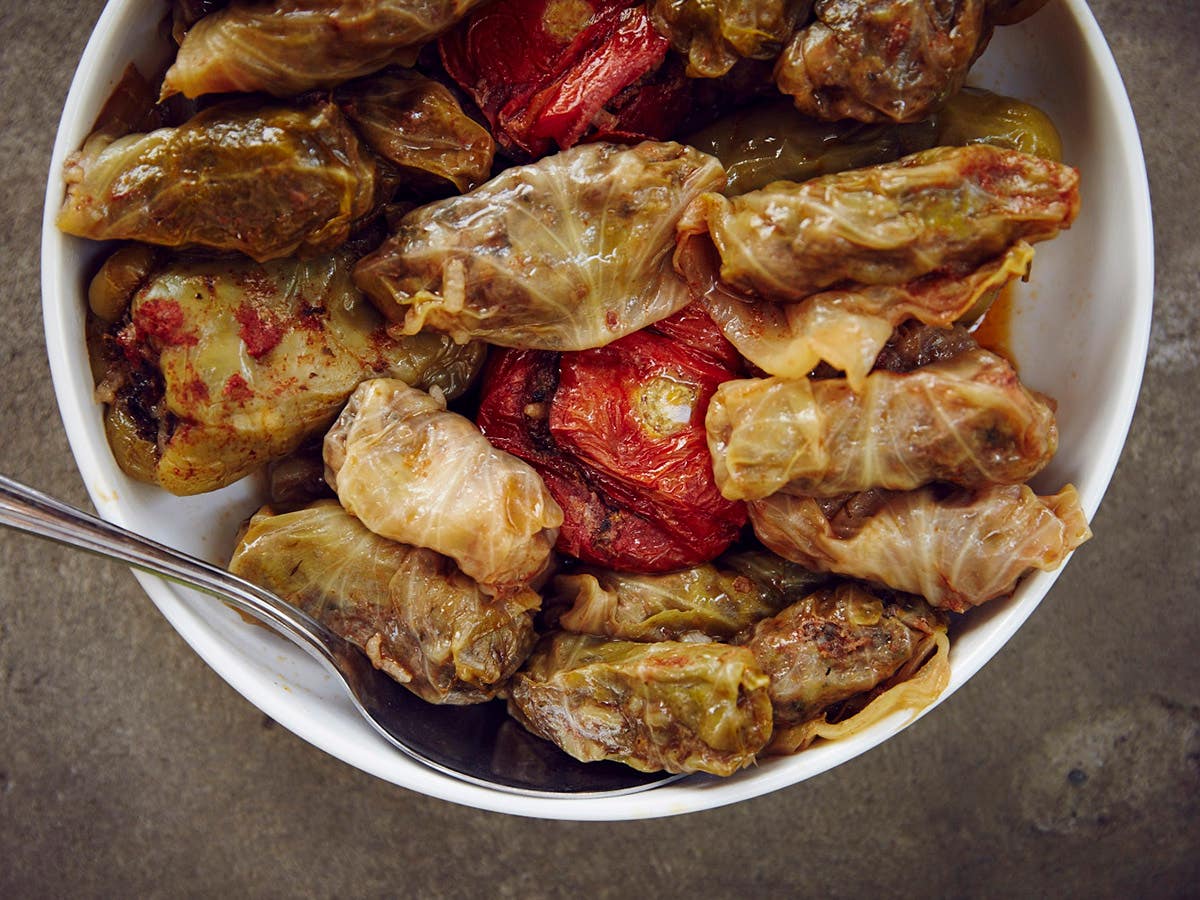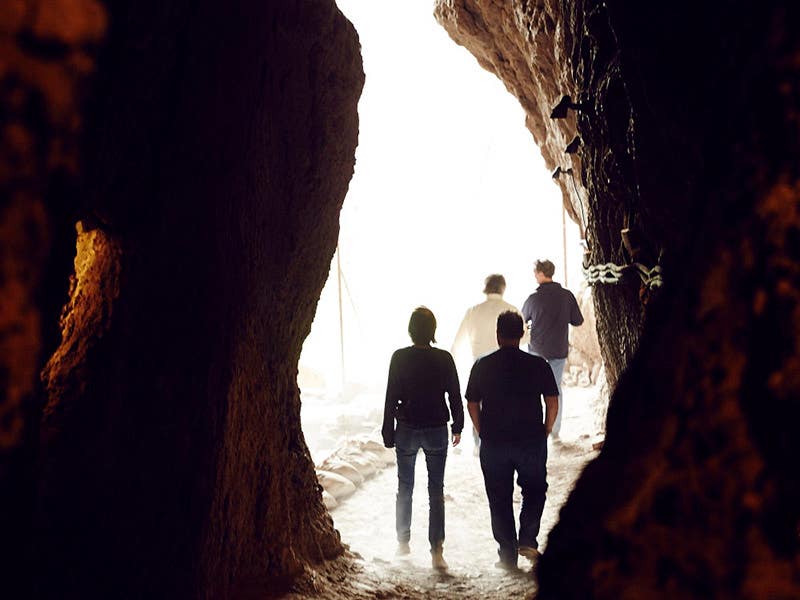
The World’s First Winery
While archeologists unearth the world’s oldest known winery in a cave in Armenia, a new generation of producers is reviving an ancient wine-making tradition 6,100 years in the making
“This is it: the genesis,” exclaims winemaker Paul Hobbs, walking through a tight opening into a mass of monolithic rocks. “The cave where it all began.”
Hobbs and his partners are taking a break from their vines to explore one of the world’s oldest known winemaking operations. It’s in a cave. In Armenia. And not just any cave: a massive, primordial, bat-infested, Transcaucasian caveman cave. The Areni-1 complex, uncovered in 2007, contains a 6,100-year-old winery replete with fermenting vats, a grape press, and subterranean clay storage vessels. Altogether, it’s the best-preserved archeological site in the ongoing search for winemaking’s birthplace. And it’s only 60 miles from Mount Ararat, where Noah is said to have parked his ark after the flood and planted the earth’s first vineyard.
When you’re inside the cave, where the National Geographic Society and UCLA are continually excavating, you can’t help wondering what life must have been like back then. It’s quite cool—“temperature controlled,” as Hobbs puts it, meaning wine-friendly. Like a sandy beach, the floor is soft and springy, covered in a layer of fine dirt. Hobbs rests his hand on a guano-encrusted wall and gazes down at the gray-white earthenware jugs sunk into the powdery floor. “These have been sitting here for thousands of years,” he says. “It’s hard to fathom. We don’t have words for this feeling; it’s something mystical, something ethereal.”
Few people outside the former Soviet Union have ever tasted Armenian wine, but Hobbs and his team are part of a growing movement here hoping to change that. In addition to his own winery in Sebastapol, California, Hobbs consults on dozens of projects around the globe, from Uruguay to Ontario. And the 62-year-old vintner played a pivotal role in shaping the modern Argentinean wine industry two decades ago. His Armenian venture is a partnership with two Los Angeles-based Armenian brothers, Viken and Vahe Yacoubian. The first releases from Yacoubian-Hobbs Wines—made in the vineyards of Rind, a short drive from the Areni-1 archeological site—will launch next year.
Visiting Areni-1, it’s easy to share Hobbs’ enthusiasm for the chance to make wine at the cradle of viticulture. The cave is situated at the conjunction of an ancient canyon and a steep, narrow valley. From the fertile base of this X-shaped gorge, sweeping green hillsides give way to immense jagged red stone formations seemingly erupting from the earth’s core. These cliffside spires must have been just as awe-inspiring to the people who began cultivating grapes here millennia ago.
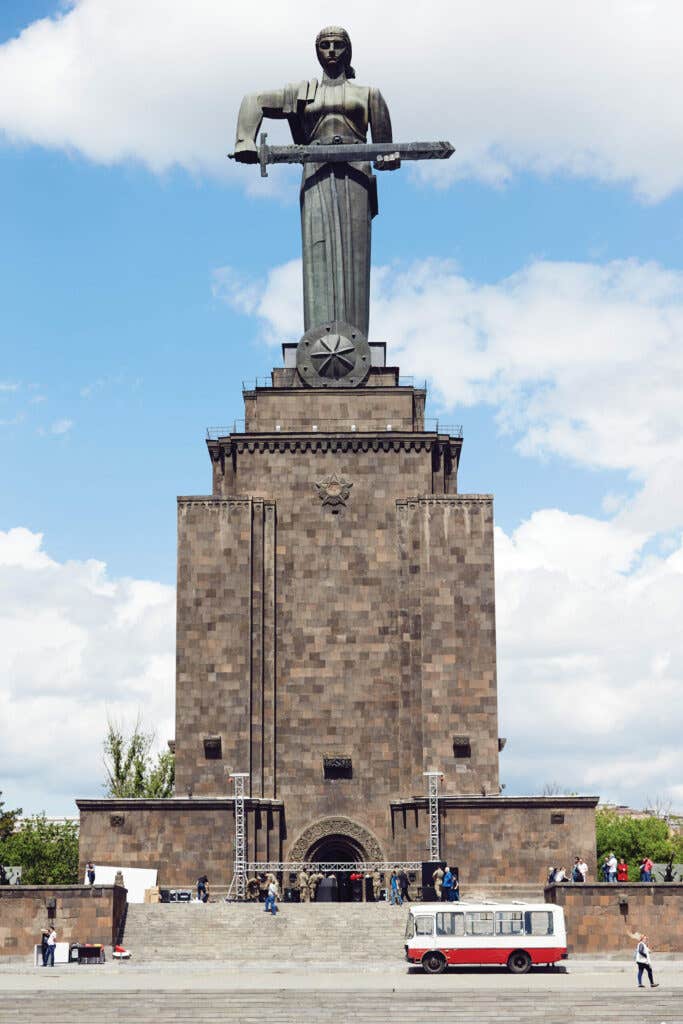
Imagine a band of hunter-gatherers standing on a ridge across the Arpa River, surveying these craggy rifts as a place they might find shelter and protection from the leopards and jackals competing for survival here in the Armenian highlands. Areni-1 was inhabited during the early Copper Age, a transitional epoch between the Stone Age and the Bronze Age also known as the Chalcolithic period. At that point, we were still pretty much cartoon cavemen who hadn’t yet invented writing or wheels. The advent of alcoholic beverages would help kick-start those breakthroughs.
Consider: Only by domesticating animals and tending crops did we evolve away from pure survival and into a mode of life where division of labor and increased specialization developed into critical thinking. This cave is a key locus in that development.
Over the past decade, archeological excavations at Areni-1 have uncovered not just the first-ever winery, but also the oldest known leather shoe and a human skull containing the most ancient fragment of brain tissue in existence. It’s been suggested the skulls and wine were linked in ceremony, and in its earliest days, the mystery of fermentation and inebriation was considered a gift of the gods—something to be ritualized. That’s why, as organized religions arose, wine became linked to divinities like Teshub, Osiris, Dionysus, and Jesus.
Early forms of booze included broken-rice grogs, grain mashed with fruit, and other proto-beers. But wine’s centrality in human history is due to the simplicity with which grape juice transforms itself into alcohol. As soon as grapes release their juices, the yeasts living on their skins break down the sugars, producing alcohol and carbon dioxide. A pile of grapes, left to their own devices, will start to ferment automatically. “Other fruits don’t generate the same amount of alcohol as grapes, nor do other fruits turn into juice as easily,” Hobbs says.
The discovery of wine would have been an alluring reason for nomadic humans to give sedentary existence a go. As the pomologist Edward Bunyard once wrote: “We can picture the Father of our civilization, genial and complacent amid the stir of camp-breaking, answering those who urged him to his packing, ‘No! I stay here until this grape juice is finished. It gets more tasty every day.’”
Of course it wouldn’t have been the only reason we settled, but wine's nascence is a key moment in the Neolithic revolution, when humans gave up nomadism for agriculture. Armenia is adjacent to the Fertile Crescent, where founder crops like emmer and einkorn wheat, barley, flax, and lentils were tamed and developed. This particular region is also the place of origin for the wild grapevine.
It’s uncertain where, exactly, viticulture began, but the strongest theories suggest that it arose between the Black and Caspian Seas in Transcaucasia (which includes Armenia, Georgia, and Azerbaijan), as well as in eastern Turkey, the Levant, and northern Iran. The earliest evidence for grape domestication, in the form of 8,000-year-old grape seeds, was found just north of Armenia at Shulaveri gorge in Georgia. The oldest example of wine—7,400-year-old residue on clay pots—was discovered just south of Armenia at Hajji Firuz Tepe in Iran. Across the Black Sea in northern Greece, findings from a settlement called Dikili Tash suggest that grapes were being crushed into wine there 6,300 years ago. But Areni-1, at 6,100 years old, is the first place where grapes and winemaking tools have been discovered together. To put things in perspective, it’s not until a millennium or so later that wine shows up in the tombs of Egyptian pharaohs.
How the first prehistoric wines were made remains a matter of speculation. One hypothesis entails nomadic humans collecting wild grapes, which, left aside, accidentally fermented, and presto: vino. “When our prehistoric ancestors first drank wine, they felt its euphoric effects,” Hobbs says, “which certainly made them want to keep at it.”
Hobbs and the Yacoubian brothers have also had to keep at it. They've been working on this ambitious project since 2008, and they still haven't actually released any wines. But things are getting closer: Their areni vines are healthy, their nursery with Hobbs' California varietals is in the ground, and the first batch of their wines is imminent. “This is the longest cycle of any project I've ever worked on,” notes Hobbs, who also accepts that things take as long as they need to in a place this remote.
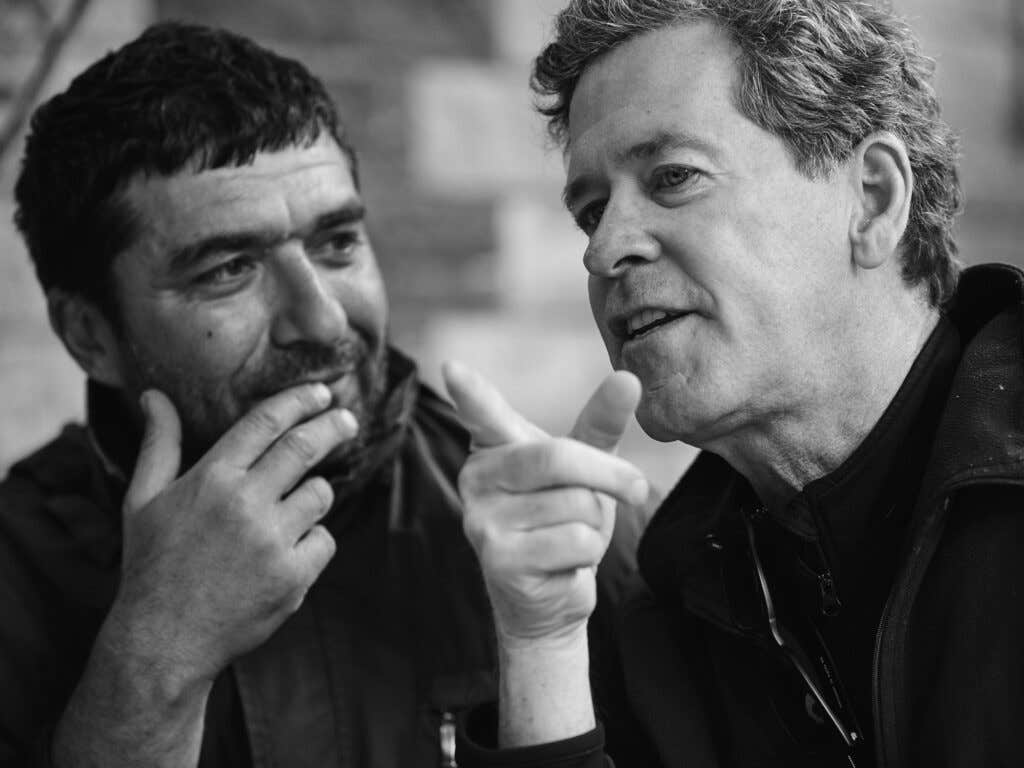
A certain level of tenacity and dedication is required just to access the Areni-1 site. Traveling to Armenia from North America is a multitransfer slog, and the drive to the cave from the capital city, Yerevan, takes a couple of hours along bumpy mountain roads. Throughout the journey, Mount Ararat's snowcapped peak dominates the biblically epic view. The road to Areni is lined with farm stands selling fresh red cherries and plastic gallons of homemade, semisweet, rustic red wine. “Many of them are riddled with microbial sanitation problems, oxidation, or overextraction,” Hobbs laments. “It's a shame, as more and more people are making pilgrimages here to taste great wine in its birthplace.”
Ancient wines have little in common with the roadside plonk available around Areni. Given the relentless global demand for wines with a true sense of place, there are opportunities here. Take the amber wines of nearby Georgia, made as they always have been in underground qvevri amphorae. Unsung until recently, they're increasingly praised in the international wine scene. Armenia, too, is ground zero for wine culture, yet it's still to be seen how it will reconcile the past with the present.
The indigenous areni grape, for example, seems ideally suited for lighter-bodied wines, yet many winemakers use it in saccharine Soviet-style wines or in brawny oak bombs. There's little consensus about what would make for a “typical” Armenian wine because nobody can say with authority what the wines used to be like. Part of the thrill is the desire to try and find out—even though the country's ancient wine culture nearly died over the past couple of centuries.
There's a simple reason why Armenia is simultaneously one of the oldest and the youngest wine-producing nations in the world: It was decreed a brandy-producing country during the 19th-century czarist era. As a result, most grapes here have ultimately ended up being distilled. The emphasis on brandy only deepened during Soviet years, and to this day, 95 percent of the grapes grown on a commercial level are used for spirits.
The rebirth of Armenian wines began only around a decade ago—barely enough time for newly planted vines to come to fruition. The producers moving things forward include Zorah, which ages a Karasì cuvée in reclaimed amphorae; Voskeni of the Ararat Valley; and Kataro, a family-run winery in the contested Nagorno-Karabakh region. Irina Ghaplanyan, a political science professor and driving force in the revival, makes an excellent red called Zabel. "Armenia's wines aren't yet at their full potential," she explains, knowingly. "We're still discovering what they can truly offer."
This is a nation where the tradition of simply drinking wine was broken. Annual consumption of vodka per capita is 5.6 liters, for example, to wine's 1.6 liters. Compare that with Georgia, where the average citizen consumes upwards of 21 liters a year. Granted, Georgia was deemed a "country of wine" in the Soviet-dominated 20th century, supplying Stalin with his favorites, and the tradition of making wine in qvevris was never interrupted. If Armenia can find a way to leverage its own historical position into a vibrant new wine culture, however, its mountainous reds may soon be drunk side by side with Georgia's skin-contact amber wines.
Since the discovery of Areni-1 nine years ago, seismic changes have already taken place in Armenia. The first-ever wine bars in Yerevan opened just a few years ago. The clientele still skews female and young, but it's a significant step in a place where most men consider wine drinking unmasculine. The sense that a new generation is coaxing things forward is palpable. Post-Soviet-style wine (read: dry) is being exported by domaines like ArmAs Estate, Hin Areni Vineyards, and Van Ardi, and there is an increasing uptick in quality. "That's where we come in," says Hobbs, who is conscious of the need to retain the wines' connection to the land. "The soul of a wine is when it speaks to a place. If you don't have that, then you've missed everything. And that quest is why we're so fired up to be here."
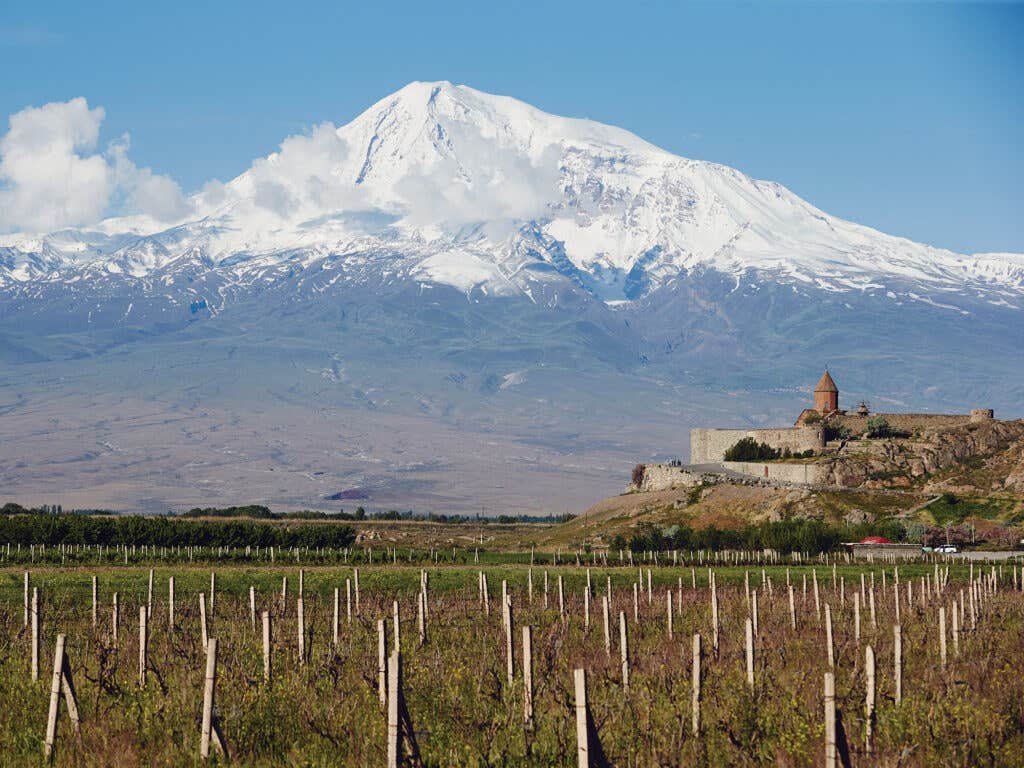
The quest to bring world-class wine back to Armenia would be a lot more complicated without Vahe Keushguerian, the winery manager for Yacoubian-Hobbs. Born into the diaspora and educated in the United States, he started making wine in Tuscany and Puglia in the 1990s. After the collapse of the Soviet Union, he bought land in the Areni region, relocated in 2009, and began working with the country's winemakers. These days, he runs a company called Semina Consulting that helps with everything from harvesting to bottling to sales to shipping. "The ringleader of the Armenian wine mafia" is what the media here have dubbed Keushguerian. That may be true, but he's also a nature lover who spends his free time tagging and propagating wild grapevines.
Not far from the cave, Keushguerian walks over to some tangled, overgrown grape bushes. These grapevines haven't been here for millennia, but they've overlooked these cliffs for at least a few generations. The varietals translate to names like “foxtail,” “the shah's empress,” and “a Kurd's forehead.”
“Whenever I come out here it makes me realize the total insignificance of our own lives,” Keushguerian says to Hobbs as they gaze up at the cliffs. As much as Keushguerian is entranced with Armenia's ancestral grapes and Areni-1, it's his opinion that it doesn't matter which country actually came to make wine first. “Being the birthplace of wine is something the countries around here all share,” he contends. “In fact, it's one of the few things we all have in common.”
Relations between Armenia and its neighbors are highly fraught. The borders to Turkey and Azerbaijan are closed. The only land routes in or out pass through either Georgia or Iran, making it logistically difficult to export wines. There have long been disputes over the Azeri exclave of Nakhchivan as well as the mountainous independent territory of Nagorno-Karabakh, which shares a currency, legislation, and much of its population with Armenia—but which Azerbaijan claims belongs to it. Perhaps the ultimate symbol for how complex the geopolitical situation is in this region is Mount Ararat itself, which lies in a part of Turkey primarily inhabited by Kurds who consider it part of the as-yet-unrecognized nation of Kurdistan.
Areni-1 is located near Ararat in Vayots Dzor, a province whose name translates as the “Valley of Sorrows.” So many wars have been fought here, and the painful memory of the Armenian genocide a century ago remains fresh. Cross-cultural tension and lingering wounds are part of the country's DNA.
As Keushguerian, Viken Yacoubian, and Hobbs leave the cave site, a picnicking group of older men waves them over. They're drinking homemade white wine and vodka from plastic water bottles. When they learn that Hobbs is American, they kiss him on the cheek and hold forth in Russian about Armenia's tragic past. Keushguerian tries to translate, but the men speak over one another with increasing urgency. Pretty soon, they are crying and hugging as Hobbs attempts to console them. He can't grasp a word they're saying. Still, he's in a land capable of expressing its emotions in ways that transcend language.
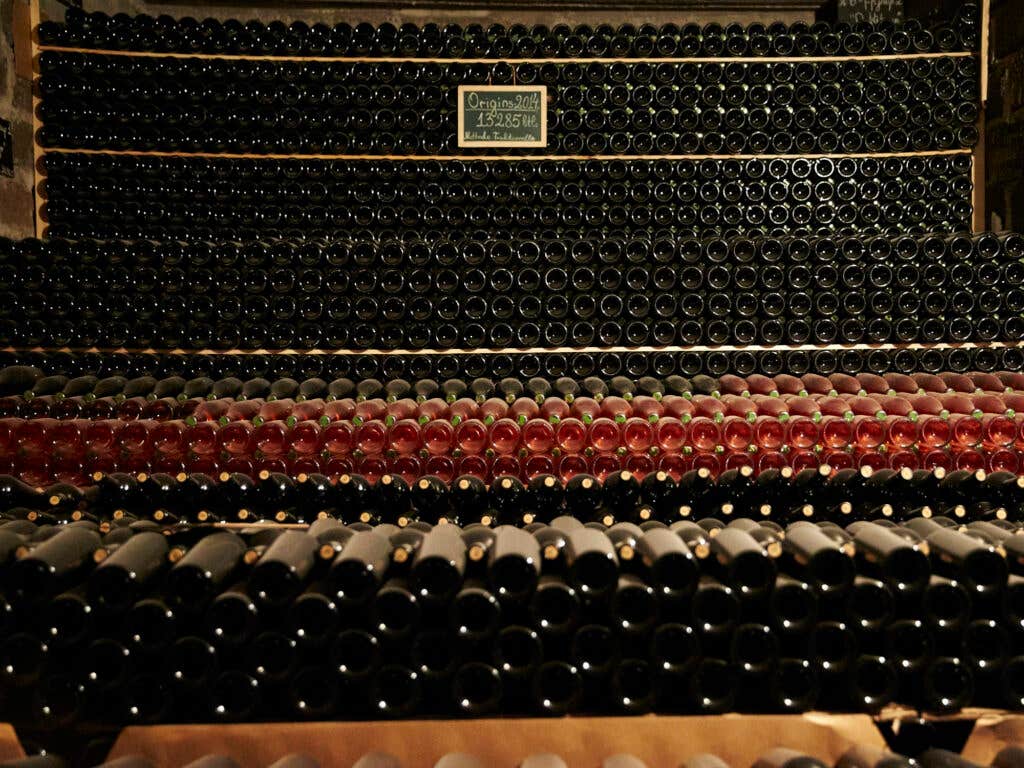
To encounter grown men crying here is not atypical. In fact, souvenir stores often sell small figurines of a doleful, bulbous-nosed, dark-haired, flower-bearing man with tears running down his face. Armenians are a deeply emotional and empathetic people; it's part of the reason they've been able to survive in such a harsh environment, but also why their communities have flourished around the world. The global Armenian diaspora is estimated to be between 7 million to 8 million people; the country's population is itself only 3 million.
William Saroyan, the legendary Armenian-American writer, felt that the secrets to life were to breathe deeply, laugh like hell, and really "taste food when you eat." Meals here are so incredibly flavorful and abundant that it's impossible to not follow his advice. After bidding the tipsy, now laughing picnickers dasvidaniya, the group heads to an outdoor grill restaurant near the base of the cave. (Part of the cave itself was damaged when someone tried to build a restaurant inside its western gallery.)
Lunch begins with platters of brightly flavored pickles, thick Caucasian yogurt, savory pan-seared apricot patties, carrots with dill, thin slices of eggplant wrapped around creamy walnuts, and local cold cuts like basturma and dried soujouk, as well as a briny, subterranean-aged cheese and heaping plates of fresh herbs: chervil, chives, cilantro, purple basil, mustardy arugula, and tarragon. And no Armenian meal would be complete without dolmas, whether cabbage-wrapped rice and meat, or forest-green vine leaves swaddling crayfish. The main course is a parade of grilled sturgeon, trout, pork chops, lamb, and potatoes.
The other tables fill with raven-haired women and muscular men with pale blue eyes wearing Adidas tracksuits. The impression of being in 1970s U.S.S.R. is amplified when Hobbs and the others depart for their nearby vineyards, jostling past blue-smoke-spewing Ladas, donkey-pulled chariots, and a rumbling bulldozer slowly dragging boulders on chains behind it.
“Most of the vineyard practices here are archaic,” Hobbs says, strolling through his vines in Rind. “We've worked to revamp growing methods, slashing yields, and harvesting later to achieve ripeness.”
Viken Yacoubian is a rugged force to Hobbs' Hollywood good looks. He recalls that when Hobbs arrived there was no infrastructure for modern winemaking. “Everything was ancient and dilapidated, left over from the Soviet period,” Yacoubian says. “It really felt formidable to attempt this.”
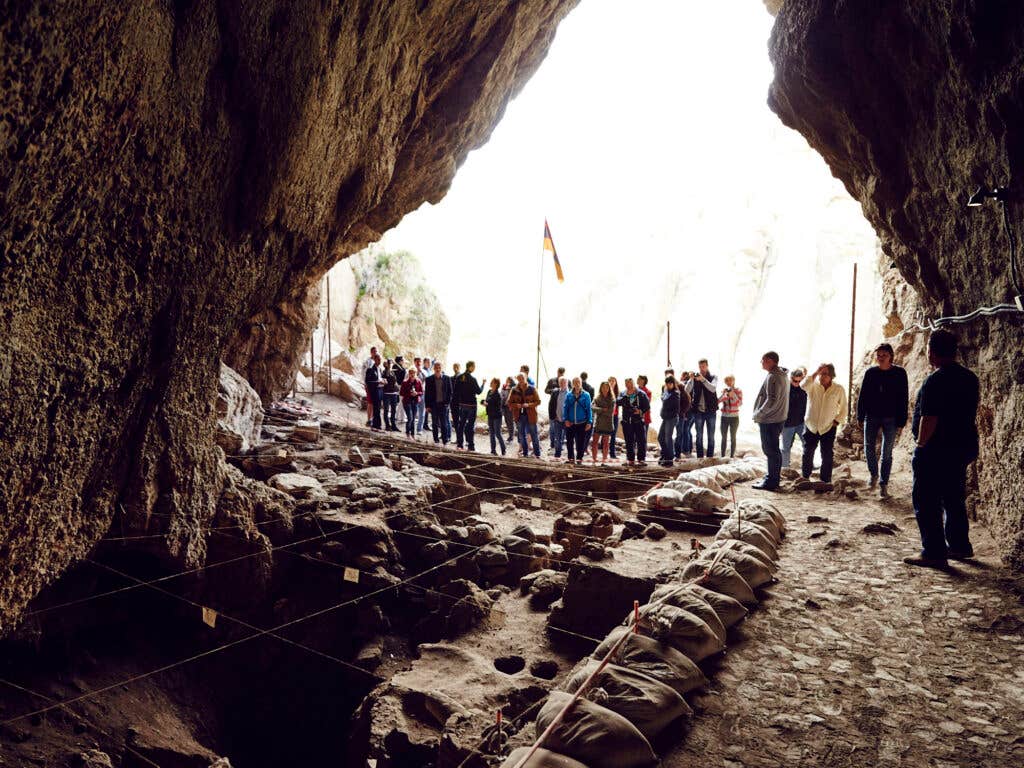
But now, eight years later, it's coming together. The final blends for their first release will be chosen tomorrow. Everyone takes a moment to inhale deeply. A shepherd pauses with his flock on a ravine in the distance. Purple wildflowers and blood-red poppies dance among the vines. “What I love about this place is the purity,” Hobbs says. “In the air, in the plants, in everything.”
Born in upstate New York, Hobbs notes the similarity between his homeland and Armenia. “The winters here are as cold as the Finger Lakes,” he says. “The flowers and soil and manure and leaves—it smells like my childhood on the farm. Every time I visit the cave, I end up feeling like a kid. I feel like I am my three-year-old daughter here. Everything is so new and marvelous for her, so fresh.”
The next afternoon, Hobbs, Yacoubian, and Irina Ghaplanyan from Zabel gather at Chateau Qvartel, Keushguerian's offices and winery. The “chateau” is an immense, rusting Soviet hangar located in Yerevan's derelict 16th quarter. A number of the buildings around here have collapsed, some are in a permanent state of incompletion, and many are windowless. It's a reminder of post-Soviet dissolution, when supply chains crumbled and the ruble was replaced with the still-precarious dram. Electricity was barely available at night from 1991 until around 2005. During those years, hotels here would give guests a wake-up call if hot water happened to become available for showering. “This part of town is kind of the projects,” Keushguerian says.
Unlikely though it may seem, this urban-bunker facility is central command for the new wines of Armenia—eight or so winemakers all operate under this one roof. Keushguerian makes his own wines here, as do Ghaplanyan, Yacoubian-Hobbs, and a handful of other idealists. There are the usual stainless-steel fermenting tanks and oak barrels for aging, but there's also a large map on the wall to help explain how all these Greater Caucasian and Near East countries fit next to one another.
“The grapes for my Keush Origins sparkling wine come from there,” Keushguerian says, pointing at the region of Khachik. It's right up against the border of Azerbaijan, close to the trenches in a militarized zone. “To make sense of wine in Armenia, we need to accept that it is a combination of history, geography, resilience, and defiance—plus a sense of duty to our ancestors,” he continues. “Wine is a way to introduce people to Armenia. You see its reality through its wine.”
Yacoubian chimes in: “The fact is these wines allow us to discuss identity. I am an Armenian, and I am making wine, but who am I? I was born in Lebanon and grew up in Los Angeles, and I came here searching for a way of defining my Armenian-ness.” Wine is helping him, and his country, define their voice.
On that note, they taste the final blend of their first vintage. The Yacoubian-Hobbs take on the areni grape smooths out its rough tannins, placing it somewhere between a mondeuse from Savoie, a Chianti riserva, and a volcanic red from Etna. It's definitely a mountain wine, but with a velvety, new-world, Hobbsian signature—and it adds density without any of the clunkiness found in other local wines.

Keushguerian and Ghaplanyan recently coauthored a paper on what they call wines from the “historical world,” distinguishing that term from “Old World” and “New World.” They wanted to identify this region—Armenia and Georgia, but also Jordan, Israel, and Lebanon—differently from the ancient world. “The ancient world is a sexy idea,” Ghaplanyan explains, “but it is something that has ceased to exist—as opposed to history, which is constantly evolving.”
Keushguerian interjects: “The ancient world is a fossil, and nobody wants to be a fossil.” Their notion that this part of the world is distinct from old-world and new-world labels allows for historical-world wines to be made with a new-world palate, as Yacoubian-Hobbs is doing, or in an old-world style, emulating European cuvées, or in a historical-world way, as are Georgia's amber wines. “There is room for all preferences and tastes with this framework,” he says.
Ghaplanyan insists that Armenian wine should be in no rush to define itself—or to limit itself. “Our people first lost our statehood in 1045 c.e.—and we only finally became a sovereign republic again in 1991,” she points out. “Twenty-five years to find ourselves again after almost a thousand is a very short time.” Armenia is an in-between place, not exactly European, Asian, or Middle Eastern. “A liminal place,” Ghaplanyan says. “That has to be the source of our strength.”
Armenians have long used wine as a way of maintaining their Armenian-ness. In 2013, the Journal of Anthropological Archaeology published a paper about the spread of early Transcaucasian culture (ETC) across the Near East in the third millennium b.c.e. The Areni-1 site was a prime ETC settlement, and as the Transcaucasians wandered, they brought wine culture with them. The archeological record suggests that winemaking is what enabled them to retain their social identity wherever they settled.
Returning from exile, Yacoubian, Ghaplanyan, and Keushguerian are essentially following their predecessors in a quest to discover themselves through wine. There's a beautiful symmetry to the idea that modern-day Armenians would define themselves in such a way. This is a place where a wine-drinking civilization learned to thrive 6,000 years ago, and where people are once again using grapes to help them find their identity—even as they search for the true nature of their wines.
The Armenian Grapes
Cultivated in Armenia’s rich, volcanic soil at high altitudes, these grape varietals are entirely indigenous and vital to the tradition of winemaking in the cradle of viticulture.
Areni
The best known of Armenia's varietals, areni is a thick-skinned, late-ripening grape. It's considered one of the country's finest, and produces fresh, bright red wines with soft, elegant red fruit flavors.
Kakhet
This late-ripening varietal is thinner-skinned than areni, and deep violet-purple in color, with small berries that make for sweet, fresh, floral juice.
Sireni
Originally from Nagorno-Karabakh, a disputed territory in South Caucasus, sireni is a thick-skinned red grape with tannic structure. It ages and develops reliably well in barrel.
Tchilar
Rare and nearly extinct until recently, tchilar is a grape to watch in the coming years. It's mildly floral with a distinct structure, and falls somewhere between a sauvignon blanc and a grüner veltliner.
Now Cook This
Drink Your Way Through Armenia
Keep Reading
Continue to Next Story
